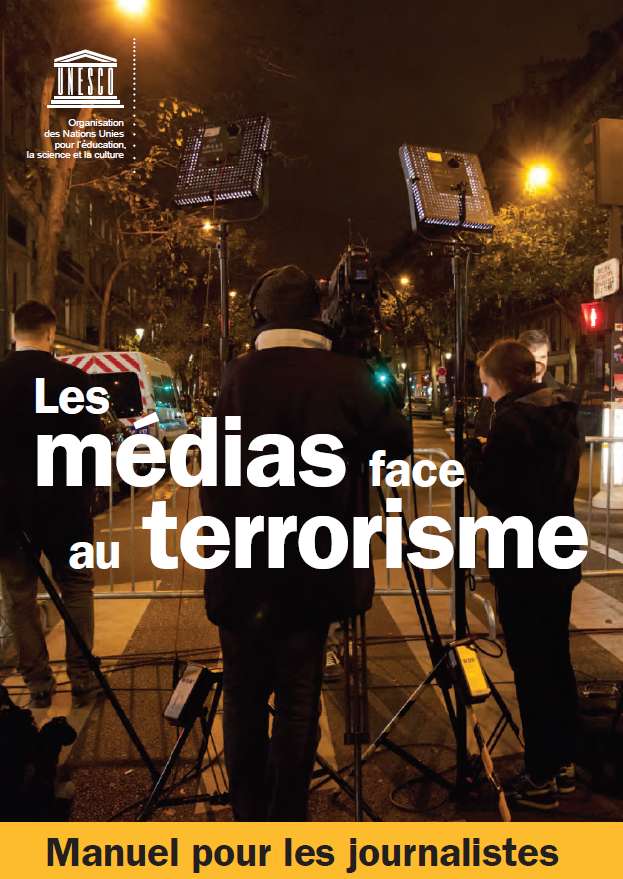Les Médias face au terrorisme: manuel pour les journalistes
Published by UNESCO, 2017

For the past several years, probably no other subject has given rise to such permanent media coverage, as well as challenging professionals to maintain journalistic balance and integrity.
Many of the violent attacks we see happening today are imagined, at least in part, with the media in mind, and no longer only target the real victims but millions of shocked and upset audiences around the world.
Additionally, faced with intense pressure to attract the public in the context of permanent technological and financial changes, the media can be strongly tempted to give primacy to violence and sensationalism by being the first to disseminate last minute information and rumours without verifying their veracity.
It is within this context that UNESCO has commissioned this guide: to study some of the ethical dilemmas involved in the journalistic treatment of terrorism and engage with media professionals on how to respond appropriately and proportionately. This is, of course, not about under-reporting. Journalism has an obligation to provide verifiable information in the public interest and the public has the fundamental right to have access to accurate and balanced information, especially when it comes to its security and freedom. However, is this result achieved by continued coverage, constant media alerts, and looping back the same information about events whose fundamental nature is to create fear?
